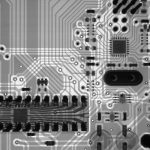Imagine walking into your home and having it respond to your every need with just a touch or a voice command. This is the promise of IoT, or the Internet of Things, in smart homes. IoT technology connects everyday devices like thermostats, lights, and even kitchen appliances to the internet, allowing them to communicate and be controlled remotely.
In today’s fast-paced world, the convenience offered by smart homes is unparalleled. Picture being able to adjust your home’s temperature from your office or check if you left the lights on while on vacation. IoT devices make this possible by enabling remote access via smartphone apps or voice assistants like Alexa and Google Assistant.
Beyond convenience, IoT enhances home security. Smart cameras and doorbell systems can send real-time alerts to your phone, allowing you to monitor your home from anywhere. Motion sensors and smart locks add layers of protection, making it easier to keep your family and belongings safe.
IoT isn’t just about gadgets; it’s about efficiency. Smart thermostats learn your behavior and adjust temperatures accordingly, saving energy and lowering utility bills. Connected appliances can optimize water and electricity usage, contributing to a more sustainable lifestyle.
The impact of IoT extends beyond individual homes. Cities are exploring IoT for better management of resources like water and energy, improving overall sustainability. As more devices become interconnected, the potential for smarter, more efficient living environments grows exponentially.
Inside the Future: How IoT Transforms Smart Homes
At the heart of this revolution is IoT, a network of interconnected devices embedded with sensors and software that communicate and exchange data. These devices range from smart thermostats and lighting systems to security cameras and kitchen appliances. By collecting and analyzing data in real-time, IoT devices can adjust settings, automate tasks, and provide insights to enhance efficiency and convenience.
One of the most striking transformations brought by IoT is in home automation. Imagine waking up to the aroma of freshly brewed coffee, timed perfectly by your smart coffee maker that learns your wake-up routine. As you step into your bathroom, the lights adjust to your preferred brightness and temperature settings set by your smart home system. Throughout the day, sensors monitor energy usage, optimizing heating, cooling, and lighting to save costs and reduce environmental impact.
Security is another area where IoT excels. Smart cameras with facial recognition technology can identify family members and alert you to unfamiliar faces. Door locks can be remotely controlled and monitored, providing peace of mind whether you’re at home or away.
IoT also enhances health and well-being in smart homes. From smart beds that adjust firmness based on sleep patterns to refrigerators that suggest recipes based on their contents, IoT integrates seamlessly into daily routines, promoting healthier lifestyles.
The future of IoT in smart homes holds endless possibilities. As technology advances, we can expect even greater integration and personalization. Homes will become not just smart, but intuitive companions that anticipate and adapt to our needs, creating a truly connected living experience.
Unlocking Comfort: IoT’s Impact on Modern Living Spaces
Imagine stepping into a home where every device anticipates your needs effortlessly, adjusting the thermostat as you walk in, brewing your coffee just the way you like it, and even dimming the lights to match your mood. This futuristic scenario is not just a dream anymore but a reality made possible by the Internet of Things (IoT).
IoT, a network of interconnected devices that communicate and share data, is revolutionizing how we interact with our living spaces. From smart thermostats that learn your temperature preferences over time to voice-activated assistants that control everything from lighting to security systems, IoT is transforming houses into intelligent, responsive environments.
One of the most significant impacts of IoT on modern living is its ability to enhance convenience and efficiency. By connecting everyday appliances and gadgets to the internet, homeowners can remotely monitor and manage their homes from anywhere. Forgot to turn off the lights? Not a problem. Simply pull out your smartphone and do it with a tap of your finger.
Moreover, IoT doesn’t just stop at convenience—it also contributes to energy savings and sustainability. Smart energy meters can analyze consumption patterns and optimize energy use, leading to lower utility bills and reduced environmental impact. This dual benefit of cost savings and eco-friendliness makes IoT not just a luxury but a smart choice for homeowners looking to live more sustainably.
Security is another area where IoT shines. Smart security systems equipped with cameras, motion sensors, and real-time alerts provide homeowners with peace of mind, knowing that their property is protected around the clock. Whether you’re at work or on vacation, you can keep an eye on your home and receive instant notifications if anything unusual happens.
In essence, IoT is transforming modern living spaces into smarter, more efficient, and secure environments. As the technology continues to evolve, we can expect even more innovations that will further enhance comfort, convenience, and sustainability in our homes. Embracing IoT isn’t just about keeping up with the latest trends—it’s about unlocking a new level of comfort and efficiency that enriches our daily lives.
From Fiction to Reality: IoT’s Evolution in Smart Homes
Imagine waking up to a home that knows your routine even before you do. Picture lights adjusting to your mood, coffee brewing as you step into the kitchen, and your favorite playlist starting softly in the background. This isn’t science fiction anymore; it’s the reality of IoT (Internet of Things) in smart homes today.
IoT has revolutionized the way we interact with our living spaces. It’s not just about connecting devices anymore; it’s about creating seamless experiences that enhance our daily lives. In a smart home, everything from thermostats to door locks can be controlled remotely through a smartphone app. This level of connectivity not only adds convenience but also boosts efficiency and security.
Take the humble thermostat, for example. In traditional homes, you’d manually adjust it based on how hot or cold you felt. But in a smart home equipped with IoT technology, the thermostat learns your preferences over time. It adjusts the temperature automatically based on factors like your schedule, weather conditions, and even your presence in the house. This not only saves energy but also ensures you’re always comfortable without lifting a finger.
Security is another area where IoT shines in smart homes. Gone are the days of bulky, mechanical locks. With smart locks, you can lock and unlock your doors remotely, grant temporary access to visitors, and receive alerts whenever someone enters or exits your home. It’s like having a personal doorman who never sleeps.
But IoT in smart homes isn’t just about practicality; it’s also about the wow factor. Imagine controlling your entire home with just your voice or a simple tap on your smartphone. It’s akin to having superpowers that bring your home to life with a mere command.
As technology advances, the possibilities for IoT in smart homes continue to grow. From appliances that communicate with each other to AI-powered assistants that anticipate your needs, the future is bright for homeowners looking to embrace the next frontier of living.
IoT’s evolution in smart homes is more than just a trend; it’s a glimpse into the future of how we’ll live, work, and play. Whether it’s optimizing energy usage, enhancing security, or simply making life more convenient, IoT is transforming the way we interact with our homes. So, are you ready to step into the future of living?
Living Smarter: Exploring IoT’s Role in Home Automation
IoT, or the interconnected network of devices embedded with sensors and software, has redefined the way we interact with our living spaces. From thermostats that learn your temperature preferences to smart locks that enhance security, IoT devices make homes not just smarter but more intuitive.

One of the key benefits of IoT in home automation is its ability to enhance convenience. With a simple voice command or tap on your smartphone, you can control everything from lighting and heating to security cameras and kitchen appliances. This level of control not only saves time but also enhances efficiency, allowing you to focus on what truly matters.
Moreover, IoT promotes energy efficiency by intelligently managing resources. Smart thermostats adjust temperatures based on occupancy and weather conditions, optimizing energy usage without compromising comfort. This not only reduces utility bills but also contributes to a greener environment—a win-win for homeowners and the planet.
Security is another area where IoT shines brightly. Connected cameras and motion sensors provide real-time monitoring and alerts, offering peace of mind whether you’re at home or away. Imagine receiving a notification on your phone if there’s unexpected movement detected around your property or remotely granting access to trusted individuals via digital keys.
As technology advances, the possibilities for home automation with IoT are limitless. From integrating smart appliances that communicate seamlessly to creating personalized experiences tailored to individual preferences, IoT continues to shape the future of modern living.
The Rise of Smart Homes: How IoT is Reshaping Everyday Life
From adjusting the thermostat before you even step out of bed to brewing your morning coffee just the way you like it, IoT-enabled smart homes are designed to anticipate your needs and simplify your day. Picture walking into a room and the lights automatically adjusting to your preferred brightness, or your favorite music playlist starting as soon as you enter the living room – these are not scenes from a science fiction movie anymore; they are happening in homes worldwide.
The backbone of a smart home is the network of devices that communicate through the internet, exchanging data and responding to commands. These devices can range from smart speakers like Amazon Echo or Google Home that control other devices via voice commands, to smart thermostats that learn your temperature preferences and adjust settings accordingly.
But it’s not just convenience that makes smart homes so appealing. IoT technology enhances home security with connected cameras and locks that can be monitored and controlled remotely. It improves energy efficiency by optimizing heating, cooling, and lighting based on occupancy and weather conditions. It even promotes better health and well-being with smart appliances that track your eating habits or remind you to stay hydrated.
The rise of smart homes isn’t just a trend; it’s a transformative shift towards a more connected and efficient way of living. As more devices become compatible with IoT technology, the possibilities for enhancing everyday life continue to expand. Whether you’re looking to save time, reduce energy costs, or simply enjoy the convenience of a more responsive living space, the era of smart homes powered by IoT is here to stay.
Connecting Convenience: IoT’s Influence on Home Efficiency
Have you ever imagined living in a home that seems to anticipate your needs before you even realize them? Thanks to the Internet of Things (IoT), this futuristic concept is rapidly becoming a reality. IoT refers to the network of interconnected devices embedded with sensors, software, and other technologies, enabling them to communicate and exchange data. In essence, it’s like giving your home a brain and nervous system that can automate tasks and optimize energy usage, all to enhance convenience and efficiency.
Imagine waking up to the gentle hum of your coffee machine already brewing your morning cup as soon as your alarm goes off. With IoT, appliances can be programmed to sync with each other, creating seamless routines that save you time and effort. From adjusting the thermostat to your preferred temperature before you arrive home to ensuring your lights turn off when you leave a room, IoT devices learn your habits and preferences to create a more efficient living environment.

But IoT’s impact on home efficiency goes beyond mere convenience. By monitoring energy consumption in real-time, smart devices help homeowners identify inefficiencies and reduce wastage. For instance, smart thermostats can analyze your heating and cooling patterns and adjust settings automatically to conserve energy without sacrificing comfort. This not only lowers utility bills but also contributes to environmental sustainability by reducing your carbon footprint.
Moreover, IoT-enabled security systems offer peace of mind by allowing remote monitoring and control of your home. Whether you’re at work or on vacation, you can check live video feeds, lock doors, or even receive alerts about potential intrusions directly on your smartphone. This level of connectivity not only enhances security but also provides flexibility and control over your home environment from anywhere in the world.
IoT’s influence on home efficiency is transformative. By integrating smart technology into everyday appliances and systems, homeowners can enjoy a more streamlined and responsive living space. As the IoT ecosystem continues to evolve, so too will its potential to revolutionize how we interact with our homes, making them not just places to live, but intelligent hubs that cater to our needs effortlessly.
IoT Innovations: Redefining Comfort in Smart Homes
Picture waking up to a house that senses the sunrise and gradually adjusts the bedroom lighting to mimic natural light, gently nudging you awake. This isn’t just a scene from a sci-fi movie anymore; it’s the reality brought to life by IoT innovations.

One of the most impactful areas of IoT in smart homes is climate control. Traditionally, adjusting the temperature meant walking to the thermostat and manually changing it. With IoT, smart thermostats learn your habits over time and adjust temperatures automatically to optimize comfort and energy efficiency. They can even be controlled remotely via smartphone apps, allowing you to adjust the temperature before you arrive home.
Security is another realm where IoT shines brightly. Smart home security systems integrate cameras, motion sensors, and even facial recognition technology to monitor and protect your home. Receive instant alerts on your phone if there’s unusual activity detected, whether you’re at work or on vacation halfway across the globe.
Entertainment in smart homes has also seen a significant overhaul with IoT. Imagine your home theater system syncing seamlessly with your lighting and sound preferences, creating an immersive experience that adapts to the movie or music you’re enjoying.
IoT innovations aren’t just about convenience; they’re also about efficiency and sustainability. Smart appliances like refrigerators can notify you when you’re running low on groceries or suggest recipes based on the ingredients inside. This reduces food waste and makes meal planning a breeze.
Frequently Asked Questions
How can someone get started with building a smart home system?
Learn how to get started with building a smart home system by exploring essential components like smart speakers, hubs, and compatible devices. Begin by choosing a central hub, then gradually add smart devices like lights, thermostats, and security cameras that integrate with your chosen platform. Familiarize yourself with setup guides and control methods via mobile apps or voice commands for seamless automation.
What is a smart home and how does IoT technology play a role?
Learn about smart homes and IoT technology: Understand what constitutes a smart home and how IoT (Internet of Things) technology enables devices to connect and communicate with each other. Explore the benefits of automation, convenience, and energy efficiency brought by IoT in transforming everyday living through interconnected devices.
What are some popular IoT devices used to automate and control home functions?
Discover popular IoT devices that automate and control home functions efficiently. Explore smart thermostats for climate control, smart lighting systems for ambiance, security cameras for monitoring, and voice assistants for hands-free operation. Enhance your home with these innovative solutions.
What are the key benefits of transforming a traditional home into a smart home?
Learn about the advantages of upgrading your traditional home to a smart home. Discover how smart home technology enhances convenience, security, energy efficiency, and overall quality of life. Find out how these innovations can simplify daily tasks and provide greater control over home systems through automation and remote access.
How can IoT devices enhance security in a smart home environment?
Learn how IoT devices bolster security in smart homes, ensuring advanced monitoring and control over connected systems, safeguarding against intrusions and enhancing overall safety.




[…] Smart Homes: How IoT is Transforming Living Spaces […]